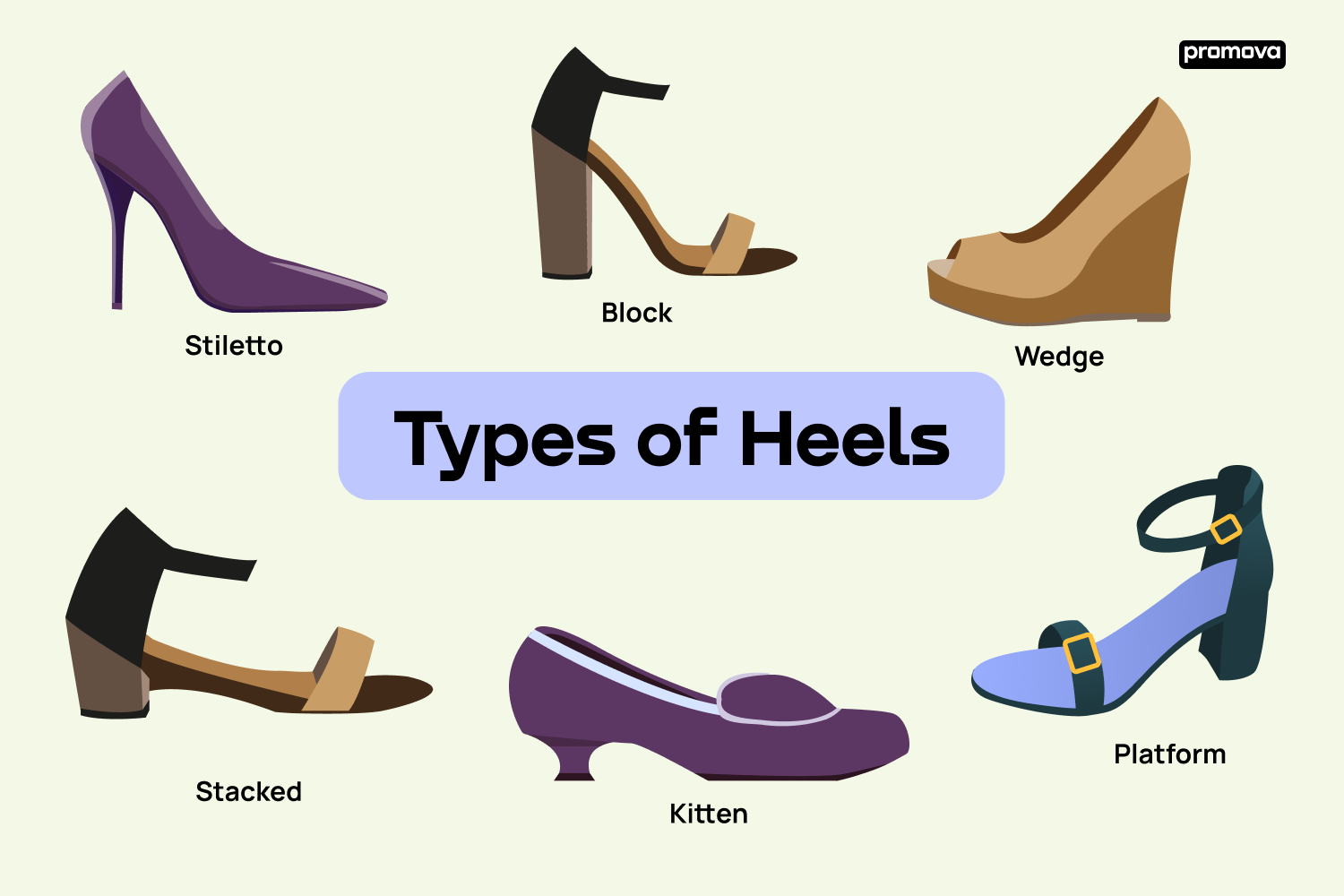Types of Heels Vocabulary
Contents
When delving into the world of fashion, understanding the lingo is crucial. Especially for language learners, knowing the different types of heels can be both enlightening and essential. Let’s explore the diverse vocabulary surrounding this fashionable footwear.

Basic Types of Heels
For beginners in language and fashion, it's helpful to start with the basics. This section introduces common types of heels that you might encounter daily. These foundational terms will set the stage for more advanced vocabulary.
- Stiletto: a tall, thin heel often exceeding 2 inches; the most popular and recognized high heel.
- Kitten: a short, slender heel; usually from 1.5 to 2 inches high.
- Block: a thick, squared bottom heel; offers more surface area and stability.
- Wedge: heel and sole merge into a single piece; offers more surface area than most heels, making it more comfortable.
- Stacked: made of stacked layers of material; often wood, giving it a layered appearance.
- Platform: a thick sole with any heel type; the thick sole differentiates it from other heels.
Now, you have a basic understanding of the common types of high heels. These terms are your foundation, essential for delving deeper into the fashion world. They'll serve as a starting point for your fashion vocabulary journey.
Specialized Types of Heels
As you delve deeper into the fashion realm, you'll come across more specialized heel types. These are less common but equally intriguing. They may seem advanced, but with a little practice, you'll use these terms confidently.
- Cone: wider at the sole and narrows down; resembles an ice cream cone.
- Slingback/Ankle strap: type of heels characterized by a strap; this strap circles the back of the ankle, rather than an enclosed heel.
- Mule: backless shoes with any heel type; you can simply slide your foot in.
- Spool or Louis heel: type of heels wider at the top and bottom; it narrows in the middle, resembling a cotton spool.
- Peep toe: shoes with a small opening at the toe; it lets a little bit of the toes show.
Specialized heel types give you a deeper appreciation of fashion nuances. While they might sound intricate initially, with repetition, they'll become second nature. Remember, practice makes perfect in language and fashion alike.
Types of Heels Based on Lenght
Heel length plays a pivotal role in comfort and occasion appropriateness. As you learn more about fashion, understanding different heels types can help you choose the right footwear for every event. Dive into the various heel length terms with us.
- Flat: no heel elevation; the sole is the same height from toe to heel.
- Low: type of heels with usually less than 2 inches; offers comfort while giving a slight lift.
- Medium: ranges from 2 to 3.5 inches; a balance between comfort and style.
- High: type of heels with usually 3.5 inches or taller; often seen in formal or fancy footwear.
- Ultra-high: exceeding 4.5 inches; usually requires platforms for added comfort.
The right heel height can determine the feel and functionality of a shoe. Now that you're familiar with these types of heels, you can better articulate your footwear preferences. Whether for comfort or style, you'll know precisely what to ask for.
15
Heel Material Variations
The material of the heel can greatly influence the shoe's aesthetics and comfort. Different materials cater to various occasions, styles, and preferences. Let's discover some commonly used materials in heel construction.
- Leather heel: made from animal hide; known for durability and classic appeal.
- Wooden heel: crafted from wood; often seen in clogs or boho-chic styles.
- Acrylic or lucite heel: clear, plastic-like material; popular in modern and edgy shoe designs.
- Cork heel: made from cork material; lightweight and often found in summer footwear like wedges.
- Metal heel: made from metallic materials; gives a sleek, modern, and sometimes industrial look.
- Covered heel: wrapped in the same material as the shoe's upper; provides a seamless and cohesive look.
The heel's material can drastically change a shoe's vibe from rustic to high-fashion. By mastering these types of heels, you can more precisely describe or search for the exact shoe style you envision. Remember, every word you learn adds depth to your language and fashion expertise.
Conclusion
Mastering the vocabulary of types of heels not only enriches your fashion lexicon but also enhances your understanding of style. With this guide, you're well on your way to confidently discussing and selecting the perfect heel for any occasion. Remember, every step you take in learning is a stride in personal growth.
Commentaires